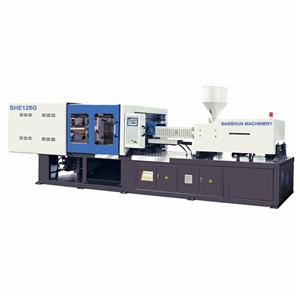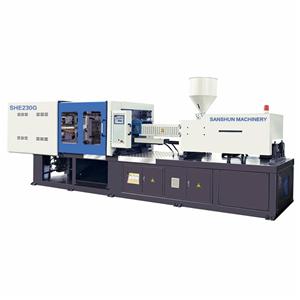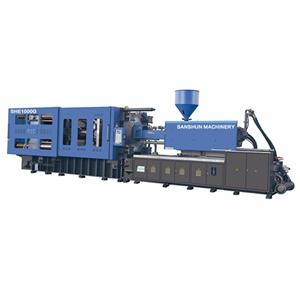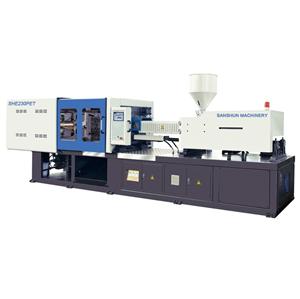- Home
- >
- News & Resources
- >
- Our Blog
- >
- The Main Causes of Silver Streaks, Bubbles and Vacuum Bubbles in PC Products
The appearance of silver streaks, bubbles, and vacuum bubbles in PC products are one of the common product defects in PC materials. The causes of these defects are many and complex, so it is difficult to judge and eliminate them.
Silver streaks (or air streaks) refer to defects that appear in the direction of the melt on the surface of the product due to gas interference during the filling process. The composition of gas mainly includes water vapor, air, decomposition gas, and solvent gas. Among them, water vapor, decomposition gas, and air are more common.
When these gases exceed a certain limit, the mold cavity loses pressure after injection molding, and the gas close to the surface of the product will emerge and be etched along the direction of the flow into a series of large and small bubble points that flicker under the light. Called silver or air line. In fact, the presence of gas during the injection process is inevitable, and a considerable part of it remains in the plastic.
When the pressure in the mold is large enough and the gas content does not exceed a certain limit, the gas is dissolved in the plastic in a dispersed state; but when the pressure in the mold is not large enough and the gas content exceeds a certain limit, these gases Released from the molten plastic one after another, reaching the surface of the product to form silver streaks, trapped inside the thick wall and becoming air bubbles.
Whether it is the silver streaks on the surface of the product or the air bubbles in the product wall, it may be the result of the action of one of the four gases or the combination of several gases. It interacts with raw materials, molds, and plasticizing systems. , The adjustment of process parameters, and even changes in weather (especially changes in humidity) and other factors have a great relationship. So the problem is more complicated. However, the focus of the problem and the countermeasures should be focused on the gas, that is, how to control the gas content.
PC raw materials
(1) Water vapor, Generally speaking, if air bubbles are irregularly dispersed on the surface of the product, it is mostly caused by water vapor.
The hot melt of PC is very sensitive to moisture, and the moisture content is required to be below 0.02%. Therefore, to control the moisture content, it is necessary to fully dry the material. Generally, the drying temperature of the PC material is about 120 ℃, and the drying time is about 4h. The time should not be too long. If it exceeds 10h, the material is easy to deteriorate, especially the material with flame retardant should not be dried for too long, and the drying method is based on the effect of the dehumidifier dryer is the best, and it has no effect on the material. Check whether the drying effect is good. You can use the air injection method to see if the shot is continuous, smooth and not white.
(2) If the air bubble particles are extremely fine and dense, they are mainly distributed around the gate of the product, forming radiating lines or fan-shaped lines, which are mostly caused by air.
The air source is: air entrained in the material. When the gate material is more, and the particle size is very different, it is easy to entrain air. Therefore, when using gate materials, it is best to screen out the powder. If the backpressure is too low and the screw speed is too high during melting, the screw will retreat too fast, and the air will easily push to the front of the barrel with the material. Therefore, it is generally recommended to extend the melting time as much as possible during the cooling time. This is to improve the plasticization quality. Very helpful.
If the temperature of the lower section is not well controlled, too high temperature will cause a part of the material to melt prematurely and block the passage of air exiting the lower opening; while if the temperature is too low, the preheating is not enough, so that some of the pellets enter the homogenization section and are wrapped air. In addition, too much looseness will also suck air. In the above situation, generally adjusting the screw speed, back pressure and backlash can be roughly solved. Vent during mold filling.
In order to make the PC material with higher melt viscosity fill the mold smoothly, it is generally to increase the melt temperature and increase the injection pressure. At high temperature and pressure, if the injection rate is fast, the melt will suddenly pass through the narrow flow channel and gate into the mold cavity with a large free space, so that the gas released from the melt will entrain the flow channel and the mold cavity. The air inside forms a high-speed spray state, and traces of dispersed airflow, that is, air marks, appear on the surface of the condensed plastic.
In addition, if there are many corners in the mold cavity, the thickness is too large, or there are too many inserts, and the gate is not positioned properly, the melt will pour into the mold cavity, the air in the mold will be vortexed, and gas will be formed in a certain location. Patterns, such as switch socket panels for molded electrical products, often occur because their sockets, interfaces, and switches are concentrated in one place. The solution to this defect is to modify the mold, on the one hand, strengthen the mold venting, and optimize the gate position; on the other hand, reduce the filling rate, especially the injection rate of the air-stripe parts.
(3) Decomposed gas Because the PC material needs to be molded at high temperatures, some decomposition is inevitable, but how to avoid a large amount of decomposition and how to exclude the gas is worth exploring.
As with the discoloration described above, the main reason for the generation of decomposition gas is the excessively high melt temperature. For example, if the barrel temperature is set too high, or the heating coil of the barrel is out of control, the nozzle should be started, and the heating coil should be checked step by step to reduce the barrel temperature; the melt stays in the barrel for too long (such as the production of small The product uses large equipment, the cushion is too large), the molding cycle is too long, or the dead material in the barrel and the stock at the dead corner are decomposed due to prolonged heating; or the melt is subjected to strong shear in the barrel, If the compression ratio of the screw is too large, the speed of the screw is too high, and the backpressure is too large, it will also decompose.
In addition, the nozzle aperture is too small, the mold gate, the runner is too small, and the cavity resistance is large, etc., which can cause the passing melt to decompose due to local overheating due to friction. Therefore, when processing PC materials, the nozzle aperture and gate has taken the size of the flow channel is large, the exhaust groove is deep, and it is not suitable to make thin-walled products.
Another important reason is that the PC itself is of poor quality and easy to decompose. This is often ignored by users, and the problem is pushed to the mold and processing equipment so that the correct way to solve the problem cannot be found.
(4) Solvent gas is mainly related to the quality of operations in production, such as the cleaning of the barrel is not clean, the additive is excessive. The solvent gas can be removed by sufficient drying to remove most of it, and it has little effect on the air marks.
It is sometimes difficult to distinguish whether the bubble point is a bubble or a vacuum bubble inside the transparent product. It is generally believed that if a bubble point has been found at the moment of mold opening, and the volume has not changed after storage for a period of time, it is a bubble, which is caused by gas interference; if it appears and becomes larger during the mold cooling process, it is a vacuum bubble.
The formation of the vacuum bubble is due to insufficient or low pressure when filling the mold. Under the sharp cooling effect of the mold, the surface of the melt in contact with the mold wall first solidifies, and then the melt of the central part cools and shrinks, causing the volume to shrink and form a hollow bubble point.







